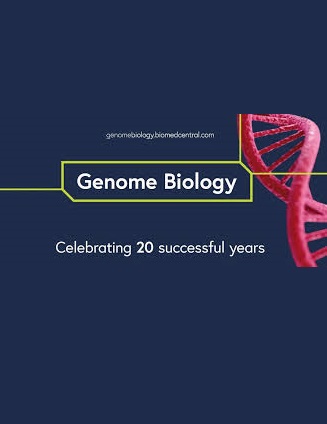Multi-task benchmarking of spatially resolved gene expression simulation models
IF 10.1
1区 生物学
Q1 BIOTECHNOLOGY & APPLIED MICROBIOLOGY
引用次数: 0
Abstract
Computational methods for spatially resolved transcriptomics (SRT) are often developed and assessed using simulated data. The effectiveness of these evaluations relies on the ability of simulation methods to accurately reflect experimental data. However, a systematic evaluation framework for spatial simulators is currently lacking. Here, we present SpatialSimBench, a comprehensive evaluation framework that assesses 13 simulation methods using ten distinct STR datasets. We introduce simAdaptor, a tool that extends single-cell simulators by incorporating spatial variables, enabling them to simulate spatial data. SimAdaptor ensures SpatialSimBench is backwards compatible, facilitating direct comparisons between spatially aware simulators and existing non-spatial single-cell simulators through the adaption. Using SpatialSimBench, we demonstrate the feasibility of leveraging existing single-cell simulators for SRT data and highlight performance differences among methods. Additionally, we evaluate the simulation methods based on a total of 35 metrics across data property estimation, various downstream analyses, and scalability. In total, we generated 4550 results from 13 simulation methods, ten spatial datasets, and 35 metrics. Our findings reveal that model estimation can be influenced by distribution assumptions and dataset characteristics. In summary, our evaluation framework provides guidelines for selecting appropriate methods for specific scenarios and informs future method development.空间分辨基因表达模拟模型的多任务基准测试
空间分解转录组学(SRT)的计算方法通常是使用模拟数据开发和评估的。这些评估的有效性依赖于模拟方法准确反映实验数据的能力。然而,目前还缺乏一个系统的空间模拟器评估框架。在这里,我们提出了SpatialSimBench,这是一个综合评估框架,使用10个不同的STR数据集评估13种模拟方法。我们介绍simAdaptor,这是一个通过合并空间变量扩展单细胞模拟器的工具,使它们能够模拟空间数据。SimAdaptor确保SpatialSimBench向后兼容,通过适应促进空间感知模拟器和现有非空间单细胞模拟器之间的直接比较。使用SpatialSimBench,我们展示了利用现有单细胞模拟器进行SRT数据的可行性,并突出了方法之间的性能差异。此外,我们基于数据属性估计、各种下游分析和可扩展性等总共35个指标来评估模拟方法。我们总共从13种模拟方法、10个空间数据集和35个指标中生成了4550个结果。我们的研究结果表明,模型估计可能受到分布假设和数据集特征的影响。总之,我们的评估框架提供了为特定场景选择合适方法的指导方针,并告知未来的方法开发。
本文章由计算机程序翻译,如有差异,请以英文原文为准。
求助全文
约1分钟内获得全文
求助全文
来源期刊

Genome Biology
Biochemistry, Genetics and Molecular Biology-Genetics
CiteScore
21.00
自引率
3.30%
发文量
241
审稿时长
2 months
期刊介绍:
Genome Biology stands as a premier platform for exceptional research across all domains of biology and biomedicine, explored through a genomic and post-genomic lens.
With an impressive impact factor of 12.3 (2022),* the journal secures its position as the 3rd-ranked research journal in the Genetics and Heredity category and the 2nd-ranked research journal in the Biotechnology and Applied Microbiology category by Thomson Reuters. Notably, Genome Biology holds the distinction of being the highest-ranked open-access journal in this category.
Our dedicated team of highly trained in-house Editors collaborates closely with our esteemed Editorial Board of international experts, ensuring the journal remains on the forefront of scientific advances and community standards. Regular engagement with researchers at conferences and institute visits underscores our commitment to staying abreast of the latest developments in the field.
 求助内容:
求助内容: 应助结果提醒方式:
应助结果提醒方式:


